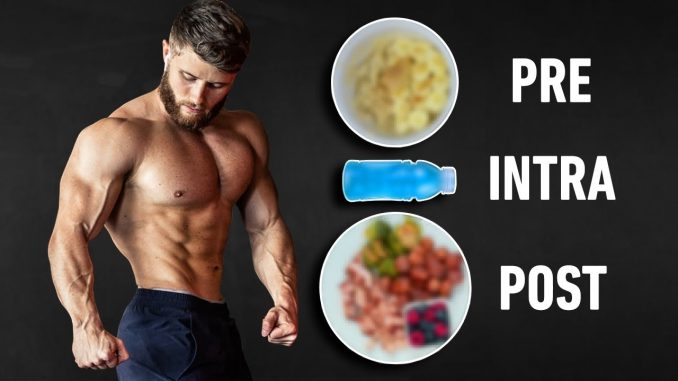
Nutrition and exercise are often thought of as separate pillars of health, but in reality, they are deeply interconnected. What you eat before and after a workout influences not only how you perform during exercise but also how effectively your body recovers afterward. Food is the body’s fuel, and just as a business runs more smoothly with the right resources allocated to the right tasks, the body functions best when its energy supply aligns with its physical demands. Understanding how to approach pre- and post-workout nutrition provides a practical framework for getting the most out of exercise while supporting long-term health.
Before a workout, the goal is to provide the body with accessible energy without creating heaviness or discomfort. Carbohydrates play an essential role here, as they are broken down into glucose, the primary fuel for muscles. A small portion of whole grains, fruit, or other easily digestible carbs can help stabilize energy levels and prevent fatigue mid-session. Protein before a workout can also be useful, particularly if strength training is involved, since it helps prime the muscles for repair and growth. The timing of this meal or snack is important as well. Eating too close to exercise can cause digestive discomfort, while eating too far in advance can leave energy reserves depleted. For most people, consuming a balanced option one to three hours before exercise provides the right balance of fuel and comfort.
Hydration is another factor that cannot be overlooked. Even slight dehydration can impair performance, leading to early fatigue, reduced focus, and slower recovery. Drinking water throughout the day and ensuring that you are well-hydrated before beginning exercise is as important as the food itself. For longer or more intense sessions, electrolytes may also be beneficial, particularly when sweat loss is significant. This highlights the idea that pre-workout preparation is not about a single meal or drink but about setting the stage for the body to perform efficiently.
Once the workout is complete, the body enters a recovery phase, and nutrition plays a critical role in how well that recovery unfolds. Muscles that have been taxed during exercise need protein to repair and rebuild, while glycogen stores that were depleted need carbohydrates to replenish. This combination—protein for muscle repair and carbohydrates for energy restoration—creates the foundation for effective recovery. For example, a post-workout meal of grilled chicken with vegetables and quinoa, or even a smoothie with fruit and protein powder, can strike the right balance. Timing again matters, as the body is particularly receptive to nutrient absorption in the hours immediately following exercise. Eating within one to two hours after a workout ensures that the recovery process is well supported.
The type of workout also influences what the body needs. Endurance training, such as long runs or cycling, depletes glycogen stores more heavily and benefits from a higher proportion of carbohydrates afterward. Strength training, on the other hand, creates more muscle breakdown and benefits from an emphasis on protein to support growth and repair. While the principles are similar—carbs and protein before and after—adjusting the balance based on activity type maximizes the benefits. Professionals can think of this like resource allocation in business: different projects require different types of investment, and the best outcomes come from tailoring resources to the specific demands of the task.
Beyond macronutrients, micronutrients also play a supporting role. Vitamins and minerals from vegetables, fruits, and whole foods help reduce inflammation and support immune function, both of which are taxed during exercise. Omega-3 fatty acids, found in foods like salmon or walnuts, can further aid in reducing exercise-induced inflammation. These nutrients may not deliver the immediate energy of carbs or the structural support of protein, but they provide the underlying stability that allows the body to adapt and thrive with consistent training.
There is also a psychological element to pre- and post-workout nutrition. Many people approach exercise with the mindset of “earning” indulgence, treating food as a reward for effort. This perspective often backfires, as it can lead to overconsumption of foods that undermine the benefits of the workout. A healthier mindset views food not as a prize but as part of the process—a partnership with exercise that supports energy, performance, and recovery. When food is reframed in this way, it becomes easier to make choices that align with long-term health goals rather than short-term gratification.
Flexibility remains important, however. Not every workout requires a carefully planned meal, and not every body responds in the same way. Some people feel best exercising on an empty stomach in the morning, while others need a small snack to perform well. Similarly, while post-workout meals are important, missing one occasionally will not derail progress if overall nutrition is balanced. The key is consistency over time, not perfection in every instance. This parallels the professional world, where success comes from steady systems rather than isolated, flawless performances.
Ultimately, what you eat before and after a workout is less about rigid rules and more about supporting the body’s natural rhythms. Carbohydrates provide accessible energy, protein builds and repairs, hydration keeps systems running smoothly, and micronutrients reduce stress on the body. When aligned with the type and intensity of exercise, these choices help ensure that every workout contributes to strength, resilience, and long-term progress. For professionals balancing busy lives, this approach is not about complicating routines but about making thoughtful, intentional choices that maximize the return on effort. Just as strategic investments yield steady growth, strategic nutrition around workouts ensures that every step, lift, or sprint brings the body closer to lasting vitality and strength.
Would you like me to also prepare a condensed 400–500 word version of this article that could work well as a quick-read wellness insight for newsletters or LinkedIn?